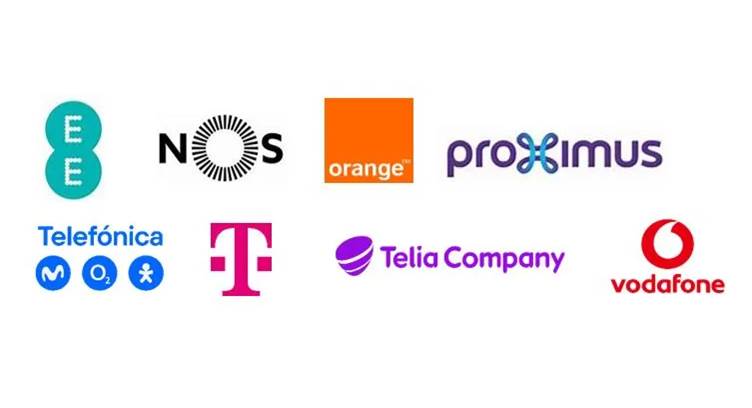EE, NOS, and Proximus have joined the Eco Rating labelling scheme that was initially launched by Deutsche Telekom, Orange, Telefónica (operating under the O2, Movistar and Vivo brands), Telia Company and Vodafone in May 2021.
Proximus launched the scheme early 2022 and EE and NOS will be rolling out Eco Rating to their customers in the coming months.
Since launching in 24 European countries from May 2021, the Eco Rating scheme has further expanded to another 11 countries and is available to consumers in 35 countries across Europe, Africa, South America and soon in Asia/Pacific.
Most key European suppliers are now covered by Eco Rating, due to extensive telco engagement with mobile phone suppliers. The rating provides incentives to improve the environmental performance of mobile phones on the market, illustrated by the increase of the average Eco Rating score from 74 to 76 out of a maximum 100 since launch 18 months ago.
Through the rating scheme, Eco Rating helps consumers compare the environmental impact of mobile phones, enabling them to make more eco-conscious choices. Eco Rating provides consistent, accurate information at retail and online on the environmental impact of producing, using, transporting and disposing of smartphones and feature phones. It looks holistically at the whole environmental footprint.
Eco Rating has launched a new database to enable consumers to compare scores for all assessed devices from the participating suppliers online via www.ecoratingdevices.com/ratings. The database can be searched and filtered by brand, model, and scores for better informed decision making.
Eco Rating has developed criteria to promote carbon efficiency and e-waste reduction, including actions such as, alternatives to plastic packaging, improved device durability, extended warranties and longer maintenance support.
With more than 300 phones analyzed by device life cycle experts at the Eco Rating Consortium, an updated scoring methodology is set to be published from January 2023. The aim of the update is to incentivize mobile device manufacturers in areas with a greater potential to improve.
Consumers can learn more about the initiative and see how the rating is calculated by visiting www.ecoratingdevices.com .
Annex:
The Eco Rating Methodology
Using information provided by device manufacturers, each mobile phone handset is thoroughly assessed and given an overall Eco Rating score (maximum of 100) to signal the environmental performance of the device across its entire life cycle.
Eco Rating applies a consistent evaluation methodology equally and objectively across 19 different criteria, culminating in a single score for each device. In addition, the Eco Rating highlights five key aspects of mobile device sustainability:
- Durability: The robustness of the device, the battery life and the guarantee period for the device and its components.
- Reparability: Covers the ease with which the device can be repaired, including mobile phone design and supporting activities that could increase the useful life of the product by improving its reparability, reusability and upgradability potential. A higher score indicates how these aspects are supported.
- Recyclability: How well the device components can be recovered and disassembled, the provided information to allow it, and how well materials can be recycled.
- Climate efficiency: The greenhouse gas emissions of the device during its whole lifecycle. The better the score here, the lower the climate impact.
- Resource efficiency: Assesses the impact caused by the amount of scarce raw materials required by the device (such as gold for the manufacturing of electronic components) towards resources depletion; the better the score here, the lower the impact on the availability of materials.
The Eco Rating methodology builds on industry knowledge and best practice gathered through previous environmental labelling initiatives. It has been developed with technical support and supervision from IHOBE (a publicly owned agency specialized in Economic Development, Sustainability and the Environment), with the participation of device suppliers, using the latest standards and guidelines from the European Union, ITU-T, ETSI and ISO with new parameters introduced where appropriate.






















